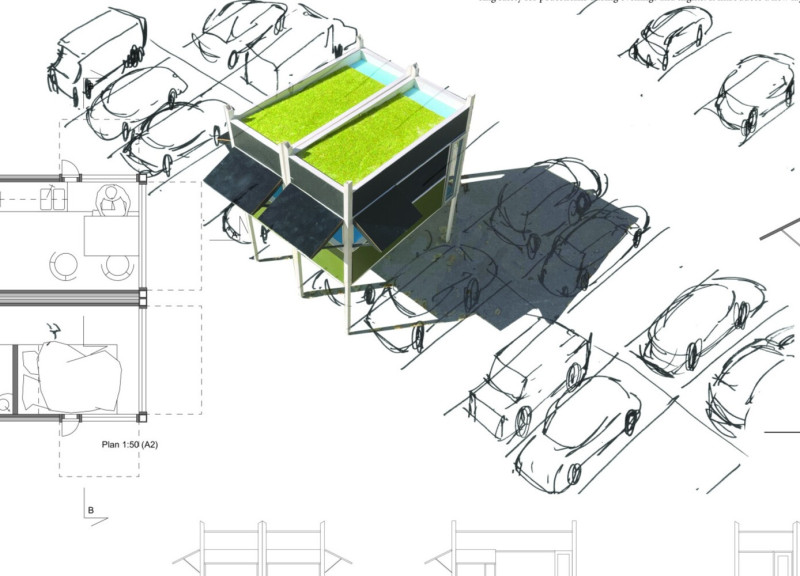5 key facts about this project
The design is characterized by a careful balance of materials and forms that work in concert to create an inviting atmosphere. The use of reinforced concrete provides structural integrity while allowing for expansive open spaces that contribute to a sense of freedom and flexibility. Steel elements strategically integrated into the design promote an airy quality and support extensive glazing. This extensive application of glass not only facilitates natural light infiltration but also connects the interior spaces with the surrounding environment, blurring the lines between inside and outside. The incorporation of wood panels adds a layer of warmth to the overall composition, creating a welcoming ambiance that invites occupants to linger.
A critical aspect of the project is its emphasis on sustainability, which is clearly articulated through various design features. The green roof systems not only serve a functional purpose in managing rainwater but also enhance biodiversity and contribute to energy efficiency. This approach underscores a commitment to ecological responsibility and positions the project as a forward-thinking model in modern architecture. The integration of technology further augments the building's sustainable practices, emphasizing the importance of reducing the carbon footprint while ensuring a comfortable environment for users.
Unique design approaches manifest throughout the project, particularly in its spatial organization and the role of communal areas. The architects have prioritized open layouts that encourage social interaction, enabling a vibrant community atmosphere. Dynamic shading systems have been employed to regulate sunlight and enhance energy efficiency, demonstrating an intelligent response to local climatic conditions. These elements work collectively to create spaces that are not only functional but also adaptable to the changing needs of its users.
The project represents more than just a physical structure; it serves as a catalyst for community development and social cohesion. The careful curation of shared spaces encourages collaboration and fosters relationships among occupants, creating an environment conducive to social engagement. The thoughtful integration of landscaping further enhances the aesthetic quality of the project while providing essential green spaces that promote well-being.
The impact of the project can be perceived in its ability to attract community involvement and address contemporary urban challenges. By prioritizing both the environmental and social dimensions of architecture, the project demonstrates a sophisticated understanding of how design can influence the fabric of daily life. This embodies the underlying philosophy that architecture is not merely about buildings but about the experiences they create for people.
For those interested in delving deeper into the architectural aspects of this project, reviewing the architectural plans, sections, and various design ideas will provide valuable insights into the innovative approaches employed. Understanding the nuances of the design and its execution can inspire further exploration into contemporary architectural practices and their potential to shape communities positively. Engaging with the project's presentation will offer a more comprehensive understanding of its intentions and outcomes, inviting a broader discourse on the role of architecture in society today.


























